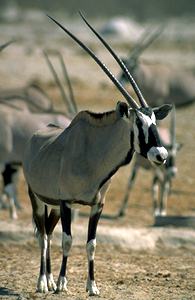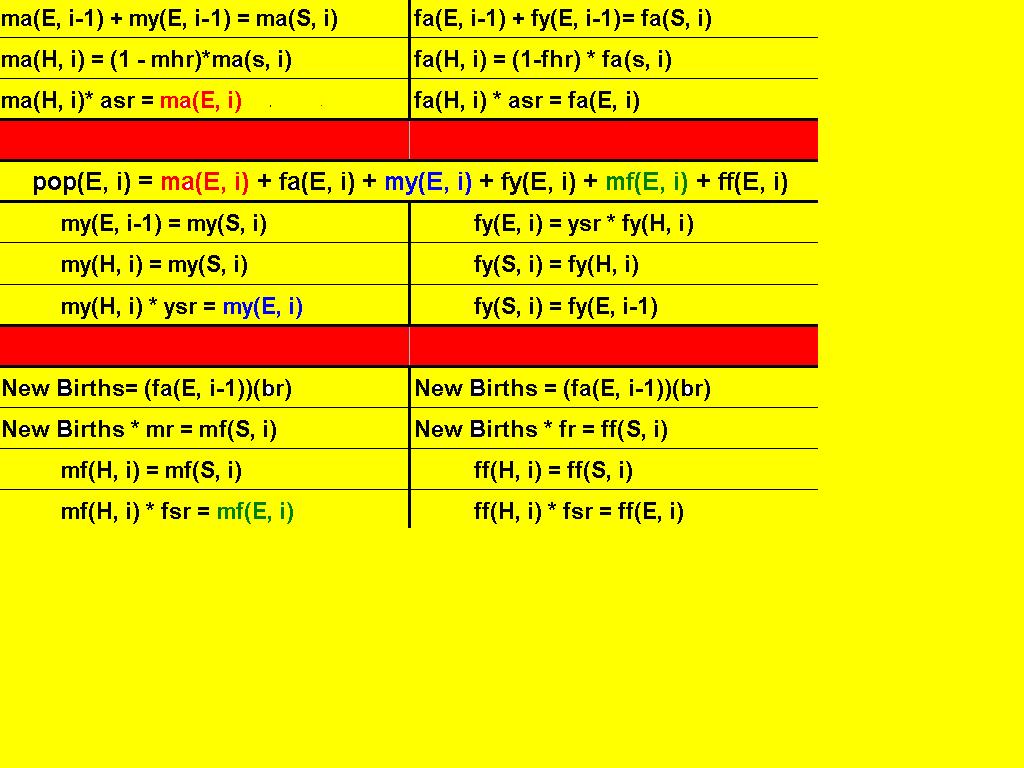AiS Challenge Team Final Report
 Team Number: One of the Best
Team Number: One of the Best
School Name: PACT High School
Area of Science: Biology
Project Title:

Hypothesis: This problem will result in a simulation that takes
place on an unbounded rectangular grid. The results will show that the
Oryx population can be effectively managed by monitoring the birth and
survival rates and varying the harvest rate.
Executive Summary: The planet is an interdependent ecosystem and,
because of the technological advances in transportation, communication and
industrialization, the implications and significance of human actions are
compounded. The new millennium has indelibly punctuated the need for an
articulate approach to administration, stewardship and harvesting of the
natural resources which are inherent to the survival of all living things.
This preeminent responsibility is evident in the importation, by the
New Mexico Department of Game and fish, of a
species called Oryx gazella, in the late 1960's, from the African
continent to southern New Mexico. The species has no natural predators in
New Mexico to control its population and it has reproduced untethered in
the area around White Sands. The Department of Game and Fish has allowed
hunts of
the exotic animal and PACT has set out create a program which can predict
the appropriate yield rates of the Oryx in order to generate a number
which can act as a guide for issuing permits to hunt Oryx and maintain a
harmmonous balance between the Oryx and its new habitat.
Introduction: There are many variables that affect the
dynamics of
a herd's population. Many of these are uncontrollable by human management
methods. One method that can be controlled is the number of animals taken
from the herd by hunting. Can a population of game animals be managed by
controlling harvest rates when no natural predator exists?
This project explores the population variations of the Oryx gazella, a
large African antelope that now lives in southern New Mexico on White
Sands National Monument and on the Missile Range. Recent information
obtained from the U.S. Bureau of Land Management, the Socorro office, is
that the Oryx has migrated up as far as the Bosque del Apache National
Wildlife Refuge.There are many variables that affect the dynamics of a
herd's population. Many of these are uncontrollable by human management
methods. One method that can be controlled is the number of animals taken
from the herd by hunting. Can a population of game animals be managed by
controlling harvest rates when no natural predator exists?
Body:
There are many variables that affect the dynamics of a herd's
population. Many of these are uncontrollable by human management methods.
One method that can be controlled is the number of animals taken from the
herd by hunting. Can a population of game animals be managed by
controlling harvest rates when no natural predator exists?
This project explores the population variations of the Oryx gazella, a
large African antelope that now lives in southern New Mexico on White
Sands Missile Range. The Oryx has now migrated to the neighboring White
Sands National Monument, and according to the BLM office in Socorro, into
the Bosque del Apache National Wildlife Refuge.
We are exploring the effects of a varied harvest rate on the Oryx
population. To do this, we are using a C++ program that takes into
account the factors influencing the population, such as birth rate,
breeding season, male and female ratios, and of course, the harvest rate.
Although the non-native Oryx population conversely affects the population
of other native species, mainly the Desert Big Horn Sheep, to limit our
scope, we are ignoring this.
There is also a small amount of Oryx deaths annually from natural causes,
i.e. disease, and old age. Another very small cause of death annually is
road kill, and maybe a stray bomb. These causes are not of enough
significance, and are not figured into our project.
Conclusion:The herd population can be controlled by varying the
harvest rate. Currently the herd population has not been effectively
managed.
Math Model
Team Members
 Team Number: One of the Best
Team Number: One of the Best
 Team Number: One of the Best
Team Number: One of the Best

